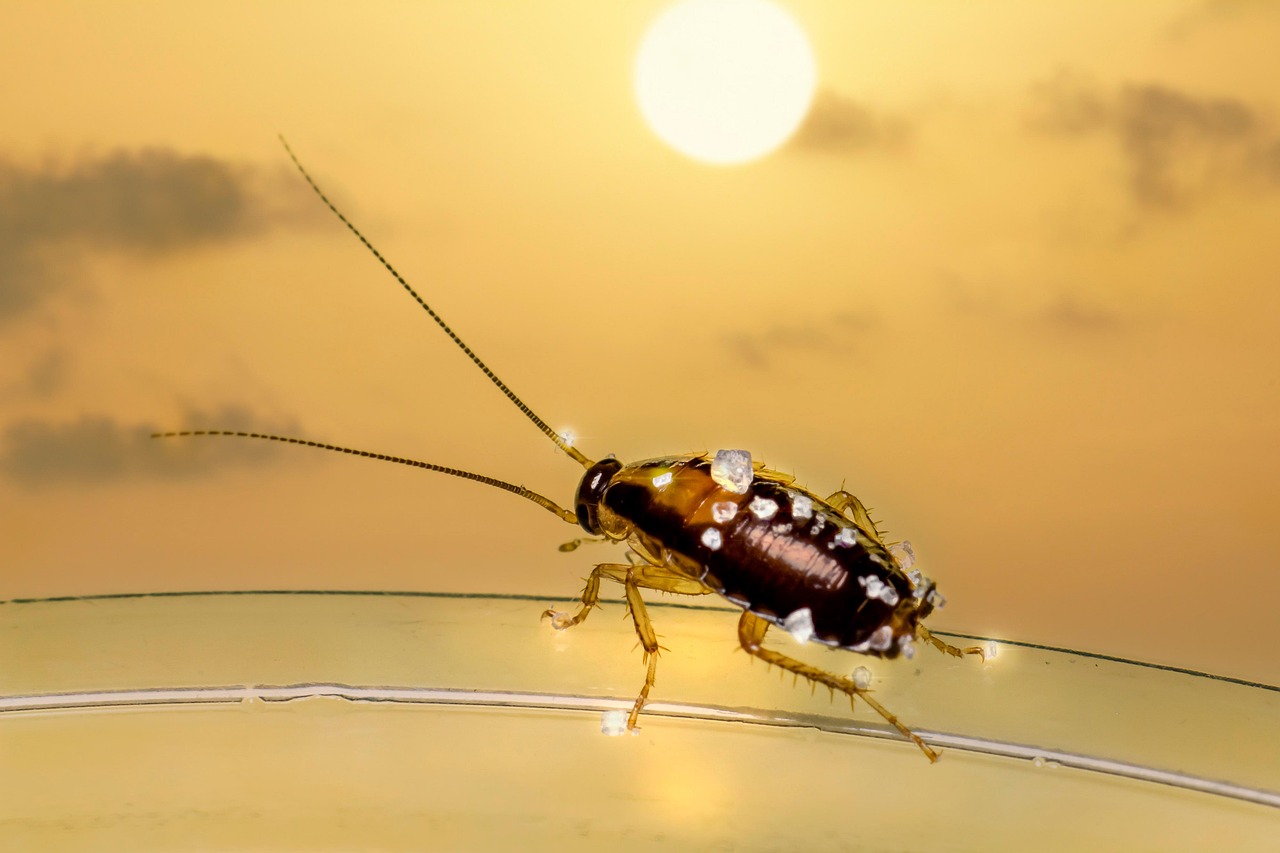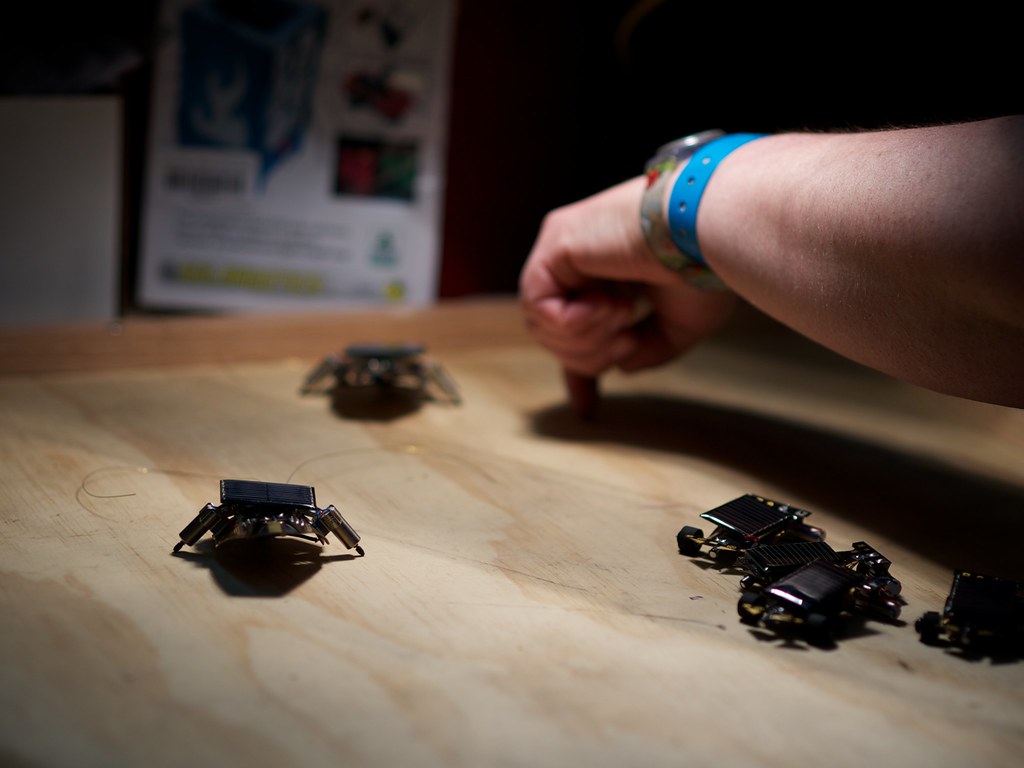Picture this: You’re trapped under rubble after an earthquake, your phone is dead, and rescue teams can’t locate you. Suddenly, a small mechanical whirring sound approaches through the debris. It’s not a drone or robot – it’s a cockroach with tiny electrodes attached to its back, guided by remote control to find survivors like you. This isn’t science fiction anymore. Scientists around the world are literally turning insects into living, breathing rescue machines by implanting electrodes directly into their nervous systems.
The Birth of Biological Robots

Researchers first cracked the code of insect mind control back in the early 2000s, but the technology has exploded in recent years. Scientists discovered they could tap directly into a cockroach’s nervous system, essentially hijacking their natural movement controls. By implanting hair-thin electrodes into specific nerve clusters, they can make these creatures turn left, right, or move forward on command. It’s like having a remote control for a living animal, except the “batteries” never run out because the bug powers itself. The process doesn’t harm the cockroach – they continue eating, sleeping, and living normally when not being controlled.
Why Cockroaches Make Perfect Candidates

Cockroaches aren’t just chosen because they’re abundant and hardy – though those qualities certainly help. These insects possess an incredibly robust nervous system that can withstand surgical procedures most other bugs couldn’t survive. Their size is perfect too; big enough to carry small electronic payloads but small enough to squeeze through spaces no human or traditional robot could navigate. Plus, cockroaches are practically indestructible – they can survive radiation levels that would kill humans, live for weeks without food, and even continue functioning after losing their heads. When you’re building a rescue bot, you want something that won’t break down when conditions get tough.
The Surgical Process Behind Cyborg Creation

Creating a cyborg cockroach sounds like something from a mad scientist’s laboratory, but the actual procedure is surprisingly delicate and precise. Scientists first anesthetize the cockroach using cold temperatures, then carefully drill tiny holes in their protective shell. Ultra-thin electrodes, thinner than human hair, are inserted into specific nerve clusters that control the insect’s antennae and leg movements. A small backpack containing the control circuit and battery is then glued to the cockroach’s back using biocompatible adhesive. The entire process takes about 30 minutes, and the cockroach typically recovers within hours, ready to receive its first remote commands.
How the Remote Control System Actually Works

The control mechanism is brilliantly simple yet scientifically sophisticated. When researchers want the cockroach to turn left, they send an electrical pulse to electrodes near the left antenna, tricking the insect’s brain into thinking it’s touched an obstacle on that side. The cockroach’s natural response is to veer away from the perceived threat, turning right. By alternating which antenna receives stimulation, operators can steer the bug like a remote-controlled car. The electrical pulses are incredibly weak – about the same intensity as the signals naturally flowing through the cockroach’s nervous system. This means the bug experiences the commands as natural sensations rather than painful shocks.
Real-World Rescue Applications Being Tested
Emergency response teams are already testing these biological bots in simulated disaster scenarios with remarkable results. In earthquake simulations, cyborg cockroaches have successfully navigated through rubble piles, located hidden speakers playing human voices, and transmitted location data back to rescue coordinators. The bugs can squeeze through gaps as small as a quarter-inch wide and climb over obstacles that would stop wheeled robots cold. Some researchers have even equipped them with tiny microphones and cameras, creating mobile surveillance units that can assess dangerous situations before human rescuers enter. Fire departments in Japan have conducted trials using these creatures to map building layouts during emergencies when visibility is near zero.
The Miniature Technology Packed Into Bug Backpacks
The electronic backpacks these cyborg insects carry are marvels of miniaturization. Each unit weighs less than a paperclip but contains a microprocessor, wireless transmitter, battery, and sometimes additional sensors like cameras or microphones. The batteries can power the system for up to eight hours of continuous operation, though the cockroaches typically work in shorter bursts to prevent fatigue. Some newer models include GPS chips smaller than a grain of rice, allowing precise location tracking even in collapsed buildings where cell phone signals can’t penetrate. Engineers continue shrinking these components – the latest prototypes are 40% smaller than versions from just two years ago.
Ethical Concerns and Animal Welfare Debates
Not everyone is thrilled about turning insects into remote-controlled servants, and the ethical debates are heating up. Animal rights advocates argue that manipulating any creature’s nervous system crosses moral boundaries, even if the animal appears unharmed. Some philosophers question whether we have the right to override another being’s free will, regardless of species. However, supporters point out that cockroaches lack the complex emotional systems that make suffering meaningful, and the potential to save human lives outweighs concerns about insect autonomy. Research protocols now require extensive monitoring to ensure the cockroaches maintain normal behaviors when not being controlled, and studies show no long-term negative effects on their health or lifespan.
Beyond Cockroaches: Other Insects Joining the Cyborg Army
While cockroaches grabbed headlines first, scientists aren’t stopping there. Researchers have successfully created remote-controlled beetles, moths, and even flying locusts. Beetles offer incredible strength – they can carry payloads up to three times heavier than cockroaches while maintaining precise control. Moths bring night vision capabilities and can navigate using scent trails, making them perfect for tracking chemical leaks or explosives. Flying cyborg locusts represent the holy grail of insect robotics, offering three-dimensional movement through spaces no ground-based bug could reach. Each species brings unique advantages, creating a diverse toolkit for different rescue scenarios.
The Military Applications Nobody Talks About
While rescue operations grab positive headlines, military applications of cyborg insects are advancing rapidly behind closed doors. These biological spies could infiltrate enemy facilities, plant listening devices, or conduct surveillance missions impossible for traditional technology. The small size and natural behavior of insects make them nearly undetectable compared to mechanical drones. Some prototypes can even carry tiny explosive payloads, though such applications remain highly classified and controversial. Defense contractors have invested millions in insect cyborg research, viewing them as the ultimate stealth weapons for modern warfare.
Current Limitations and Technical Challenges
Despite impressive progress, cyborg insects still face significant limitations that prevent widespread deployment. The biggest challenge is battery life – even the most efficient systems only provide 8-10 hours of operation before needing replacement or recharging. Signal range is another issue; current wireless controls work reliably only within about 100 meters, limiting their usefulness in large disaster zones. The insects also experience fatigue from electronic stimulation, requiring rest periods that interrupt missions. Weather conditions can disrupt both the bugs’ natural behaviors and their electronic systems, making outdoor operations unpredictable during storms or extreme temperatures.
Breakthrough Innovations on the Horizon
Scientists are racing to solve current limitations with innovations that sound like science fiction. Solar-powered backpacks could eliminate battery life issues, drawing energy from ambient light to keep systems running indefinitely. Researchers are developing swarm intelligence software that would allow hundreds of cyborg insects to work together, sharing information and coordinating searches automatically. Some teams are experimenting with biological batteries that harvest energy from the insect’s own body processes, creating truly self-sustaining cyborg systems. Advanced neural interfaces could provide more precise control while requiring less electrical stimulation, reducing fatigue and extending operational periods.
The Economics of Biological Robotics
Creating cyborg insects is surprisingly cost-effective compared to building traditional rescue robots. A single cockroach cyborg costs roughly $10 to create, including the insect, surgical procedure, and electronic components. Compare that to search-and-rescue robots that can cost $100,000 or more, and the economic advantage becomes clear. Mass production could drive costs even lower – some estimates suggest cyborg insects could eventually be produced for under $5 each. Insurance companies are taking notice, potentially offering premium discounts to emergency services that deploy these biological systems, viewing them as cost-effective tools for reducing rescue operation expenses and improving success rates.
Training Programs for Cyborg Insect Operators
Operating cyborg insects requires specialized skills that blend biology, electronics, and emergency response tactics. Training programs are emerging at universities and emergency response academies, teaching students how to handle live insects, perform electrode implantation, and master remote control techniques. The learning curve is steep – skilled operators can navigate obstacles and locate targets with precision that amazes even experienced drone pilots. Some programs include virtual reality training systems that simulate disaster scenarios, allowing operators to practice without risking real insects or equipment. Professional certifications are being developed to ensure operators meet safety and effectiveness standards.
Global Research Centers Leading the Revolution
Research into cyborg insects spans the globe, with major programs in the United States, Japan, South Korea, and several European countries. North Carolina State University leads much of the American research, focusing on cockroach and beetle systems for search and rescue. Japanese researchers at the University of Tokyo have pioneered flying cyborg systems using moths and locusts. South Korean teams at Seoul National University are developing swarm coordination systems that could deploy hundreds of insects simultaneously. Competition between research centers drives rapid innovation, with new breakthroughs announced regularly as teams race to perfect their biological robots.
The Future Landscape of Biological Emergency Response
Emergency response in the coming decades will likely include cyborg insects as standard equipment alongside traditional tools and technology. Fire departments may deploy swarms of heat-resistant cyborg cockroaches to map building layouts before human firefighters enter dangerous zones. Search and rescue teams could release hundreds of sensor-equipped insects to locate survivors across wide disaster areas in hours rather than days. Police forces might use stealth cyborg units for hostage situations, gathering intelligence without alerting suspects to surveillance activities. The integration of biological and mechanical systems represents a fundamental shift in how we approach dangerous situations where human safety is at risk.
The transformation of ordinary insects into sophisticated rescue robots represents one of the most fascinating intersections of biology and technology in modern science. These tiny cyborg creatures could revolutionize emergency response, offering capabilities no traditional robot can match while costing a fraction of conventional alternatives. As technical limitations fall away and ethical frameworks develop, we may soon live in a world where salvation arrives on six legs, guided by human intelligence but powered by millions of years of evolutionary perfection. What seemed impossible just decades ago is becoming reality in laboratories worldwide, promising a future where the smallest creatures among us might just save the most lives.

